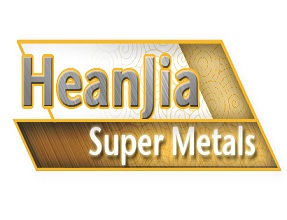You are here: home > Alloys House > Protection and strength of Beryllium Nickel Strip
Product (738)
- Pure Nickel Products (38)
- Incoloy Products (74)
- Inconel Products (72)
-
FeCrAl Product
(99)

-
Nichrome Products
(68)

- Monel Products (36)
- Hastelloy Products (49)
- Nickel Iron Alloy Product (59)
-
Nickel Copper alloys
(47)

- Nonferrous Metal Product (27)
-
Resistance Wire
(90)

- Stainless Steel Product (42)
- Mesh Demister (20)
- Others (17)
Product Forms (14)
Quality Certificate (11)
Learning Gallery (30)
Incoloy News (9)
Inconel News (22)
Molybdenum News (7)
Nikrothal News (4)
Nichrome News (13)
Titanium News (2)
Nickel News (8)
Alloys House (30)
Tools (27)
Nickel alloy News (30)
Latest Buzz (30)
nickel chrome copper iron alloys news (28)
Credit Report
Products Index
Company Info
Heanjia Super-metals Co., Ltd. [China (Mainland)]
Business Type:Manufacturer, Trading Company
City: Beijing
Province/State: Beijing
Country/Region: China (Mainland)
Alloys House
Protection and strength of Beryllium Nickel Strip
The maintenance of solid beryllium nickel strip doesn't cause any particular health issue. Just like several industrial products, the materials that contain beryllium may tend to cause a health issue if they are not handled using safety precautions. The breathing in presence of beryllium can cause severe lung issues in the sensitive organisms. The Occupational Safety and Health Administration has defined the certain necessary constraints on the industrial breathing disclosures. It is essential for the technicians to read the guidance materials and follow them properly to escape from hazardous issues of the metallic elements.
The beryllium – nickel combination more opposes the stress lessening as compare to the other spring elements. The examination of beryllium nickel strip at the pressure levels from 50 percent to 100 percent of the 0.2% offset yield potency and at a temperature of more than 400 degree F for 10,000 hours or more has resulted intospring force attenuation by 2% to 5%. When the brush alloy strip is cleaned suitably, it obtains properties of surface chemistry equivalent to other industrial nickel alloys. The technologies and processes used for plating and connections of industrial nickel base alloys can be utilized on beryllium nickel.
The pickling removing copper plating alloy 360 with the copper electroplated surface is recommended to remove the electroplated surface at first to use this surface prior to heating. The drench for two to five minutes at a temperature of 125 degree F in the solution of 20 unit volume percent H2SO4 in addition of 2 unit volume of hydrogen peroxide after the water drenching will eradiate the copper without the loss of actual beryllium nickel alloy.
The eradication of copper plating reduces the production of oxides in the process of age hardening. Pickling subsequent to heat processing to restore the actual surface brightness after the age hardening can be done by following a simple process. The drenching for 60 minutes in a 50 unit volume solution of sulphuric acid subsequent to water rinsing results into tender and glossy metal surface that does not require any extra mechanical cleanliness and in general it eradicates layer of 0.0001 inch in each side.
For the nickel strip of 0.050 inch thickness and strip lesser by 0.010 inch thickness obtains formability that is better than other methods.
With the unique combination of nickel and other metallic transition elements the resulted nickel strip alloy is needed to clean following the above techniques to avoid the health issues as well as to obtain the actual metal brightness the strip is required to clean. Following the both cleaning and health safety techniques the users obtain the bright and health protective nickel strip that is safe to use and performs significantly in the various temperature and stress conditions that makes this product an essential material for different industrial applications.Further modifications in the strip offer more improved product for the certain operations under the specific temperatures.
Pre Page:
Use of Titanium Mesh in the surgical...
Next Page:
Structure of Nitinol
.gif)


